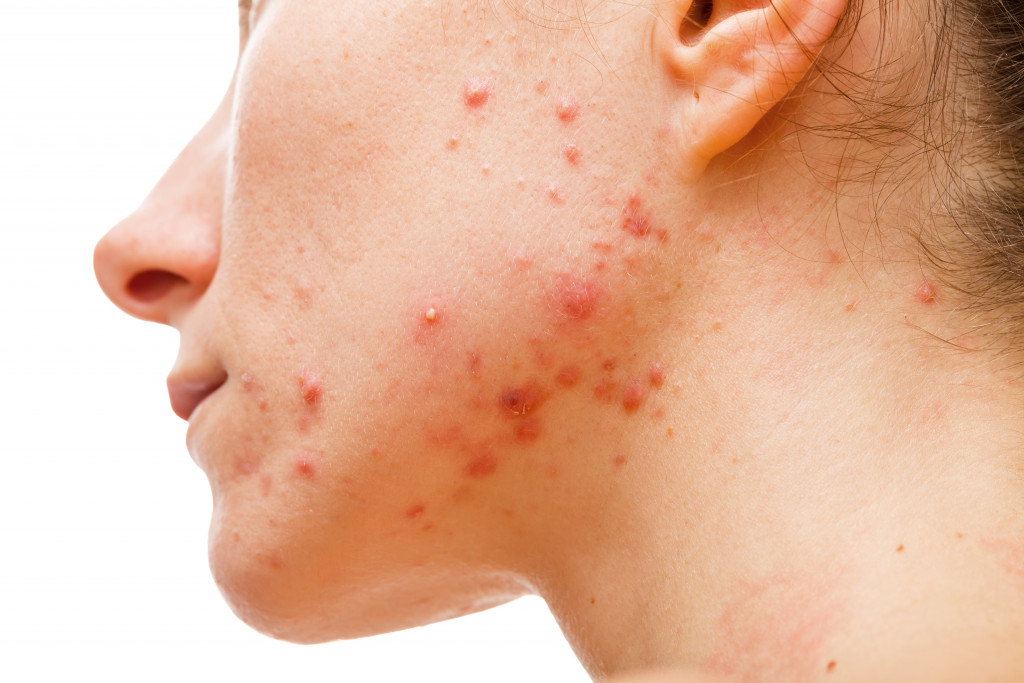Skin problems are common in the United States, with nearly 50 million Americans having some skin issues yearly. It’s essential to be aware of which disorders affect the most people so that you can identify and treat them quickly and effectively. Let’s look at some of the most common skin problems in the U.S.
Acne
Acne is one of the most common skin conditions and affects millions of people around the world. While it is typically associated with teenagers, adults can also suffer acne breakouts due to stress, hormones, or lifestyle factors like diet and hygiene.
Acne is characterized by red, inflamed pimples that can be painful or itchy and can lead to scarring if not treated correctly. Fortunately, there are many over-the-counter treatments available, as well as prescription medications that can be used to treat acne breakouts. However, when acne gets worse, scarring can be a severe problem.
Scarring happens when the skin cannot heal properly after an acne breakout, most often because of picking or squeezing at the blemishes. This can lead to permanent marks on the face and other body parts where acne is prevalent. When this happens, you’re going to need professional help. An aesthetic doctor can provide treatments to help your skin heal from particularly severe acne. They can use various treatments such as chemical peels, laser resurfacing, or dermabrasion to improve the appearance of your skin and remove scars.
Eczema
Eczema is another common skin disorder that affects many Americans each year. This condition typically presents itself as red, irritated patches of skin that may be dry or scaly. In severe cases, eczema may cause itching or burning sensations on the affected areas of the skin. Treatment for eczema often includes topical creams or ointments to help soothe irritation and reduce inflammation. In more severe cases, oral medications may be prescribed to help manage symptoms.

Athlete’s Foot
An athlete’s foot is a fungal infection caused by a fungus called tinea pedis that grows on damp surfaces like shower floors or locker rooms where athletes tend to congregate and share items like towels or clothing items. Symptoms include itchy feet and blisters between the toes and on the soles of feet that can become very painful if left untreated for too long. Treatment usually involves anti-fungal creams applied directly to affected areas and keeping feet clean and dry at all times to prevent the further spread of infection.
There are many different types of skin problems affecting people in the United States today. All are easily identifiable but require medical attention to adequately address them before they worsen, leading to other health issues such as scarring or infections. With a proper diagnosis from your doctor and following their recommended treatment plan, you should be able to manage any problem your skin might throw at you. However, prevention will always be better than cure. Here are some preventive ways to ensure that your skin won’t encounter these problems.
Sun Protection
Prolonged exposure to sunlight without adequate protection can lead to premature aging and an increased risk of developing skin cancer. Therefore, sunscreen should be worn whenever you’re outdoors and reapplied as needed throughout the day. Additionally, it’s important to seek shade when the sun is strongest (usually between 10 AM-4 PM). Wearing hats and long-sleeved clothing can also help further protect your skin from UV light damage.
Limit Your Time in the Shower
Hot showers may feel great, but they can strip away the natural oils that keep your skin hydrated and healthy. Additionally, spending too much time in the shower increases your risk of bacterial infection if you have cuts or abrasions on your body. To avoid this problem, try keeping your showers short – no longer than 10 minutes – and use lukewarm water instead of hot water whenever possible.
Eat Well
Eating a balanced diet with plenty of fresh fruits and vegetables is one of the best ways to maintain healthy skin in the long run. In addition, a diet rich in antioxidants like Vitamin C helps improve collagen production, which keeps your skin looking young and vibrant for extended periods. Omega-3 fatty acids are also beneficial as they help reduce inflammation, often linked to various types of dermatitis (eczema, psoriasis, etc.).
Moisturize Regularly
Dry skin can lead to irritation and itchiness, so if you want healthy-looking skin, ensure it is adequately hydrated by using a moisturizer appropriate for your skin type (normal/combination, oily, or dry). Moisturizing regularly helps keep the moisture balance in your skin consistent which helps protect from dryness and breakouts. If you have oily or acne-prone skin, opt for lighter moisturizers like gels or lotions instead of creams which tend to be heavier and more likely to clog pores.
Skin problems are prevalent, but with the proper preventive steps, you can keep your skin looking young and healthy for years to come! This can ensure that your skin is safe from the problems listed above. It can also prevent the worst skin problems, such as skin cancer.







